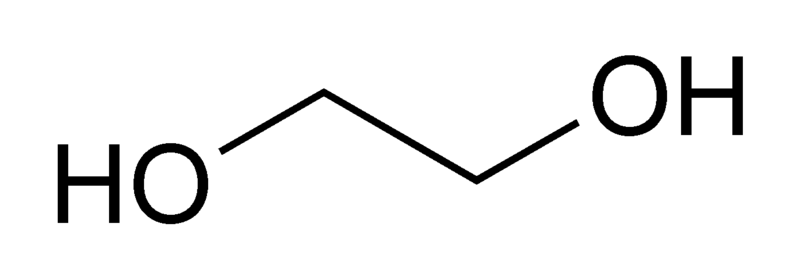Diol

|
WikiDoc Resources for Diol |
|
Articles |
|---|
|
Media |
|
Evidence Based Medicine |
|
Clinical Trials |
|
Ongoing Trials on Diol at Clinical Trials.gov Clinical Trials on Diol at Google
|
|
Guidelines / Policies / Govt |
|
US National Guidelines Clearinghouse on Diol
|
|
Books |
|
News |
|
Commentary |
|
Definitions |
|
Patient Resources / Community |
|
Directions to Hospitals Treating Diol Risk calculators and risk factors for Diol
|
|
Healthcare Provider Resources |
|
Continuing Medical Education (CME) |
|
International |
|
|
|
Business |
|
Experimental / Informatics |
Overview
A diol or glycol is a chemical compound containing two hydroxyl groups (-OH groups). Vicinal diols have hydroxyl groups attached to adjacent atoms. Examples of vicinal diol compounds are ethylene glycol and propylene glycol. Geminal diols have hydroxyl groups bonded to the same atom. In general, organic geminal diols readily dehydrate to form a carbonyl group. For example, carbonic acid ((HO)2C=O) is unstable and has a tendency to convert to carbon dioxide (CO2) and water (H2O). Nevertheless, in rare situations the chemical equilibrium is in favor of the geminal diol. For example, when formaldehyde (H2C=O) is dissolved in water the geminal diol (H2C(OH)2) is favored.
Examples of diols in which the hydroxyl functional groups are more widely separated include 1,4-butanediol and bisphenol A.
Synthesis of diols
Because diols are a common functional group arrangement, numerous methods of preparation have been developed.
- Vicinal diols can be produced from the oxidation of alkenes, usually with dilute acidic potassium permanganate, also known as potassium manganate(VII). Using alkaline potassium manganate(VII) produces a colour change from clear deep purple to clear green; acidic potassium manganate(VII) turns clear colourless.
- Osmium tetroxide can similarly be used to oxidize alkenes to vicinal diols.
- A chemical reaction called Sharpless bishydroxylation can be used to produce chiral diols from alkenes using an osmate reagent and a chiral catalyst.
- Another method is the Woodward cis-hydroxylation.
- In the Prins reaction 1,3-diols can be formed in a reaction between an alkene and formaldehyde.
Reactions
- A diol reacts like an alcohol, such as esterification and ether formation.
- Diols such as ethylene glycol are used as co-monomers in polymerization reactions forming polymers including some polyesters and polyurethanes. A different monomer with two identical functional groups, such as a dioyl dichloride or dioic acid is required to continue the process of polymerization through repeated esterification processes.
- In glycol cleavage the C-C bond in a vicinal diol is cleaved with formation of two aldehyde groups.
See also
- Alcohols, chemical compounds with one hydroxyl group
- Triols, chemical compounds with three hydroxyl group
- Polyols, chemical compounds with multiple hydroxyl groups